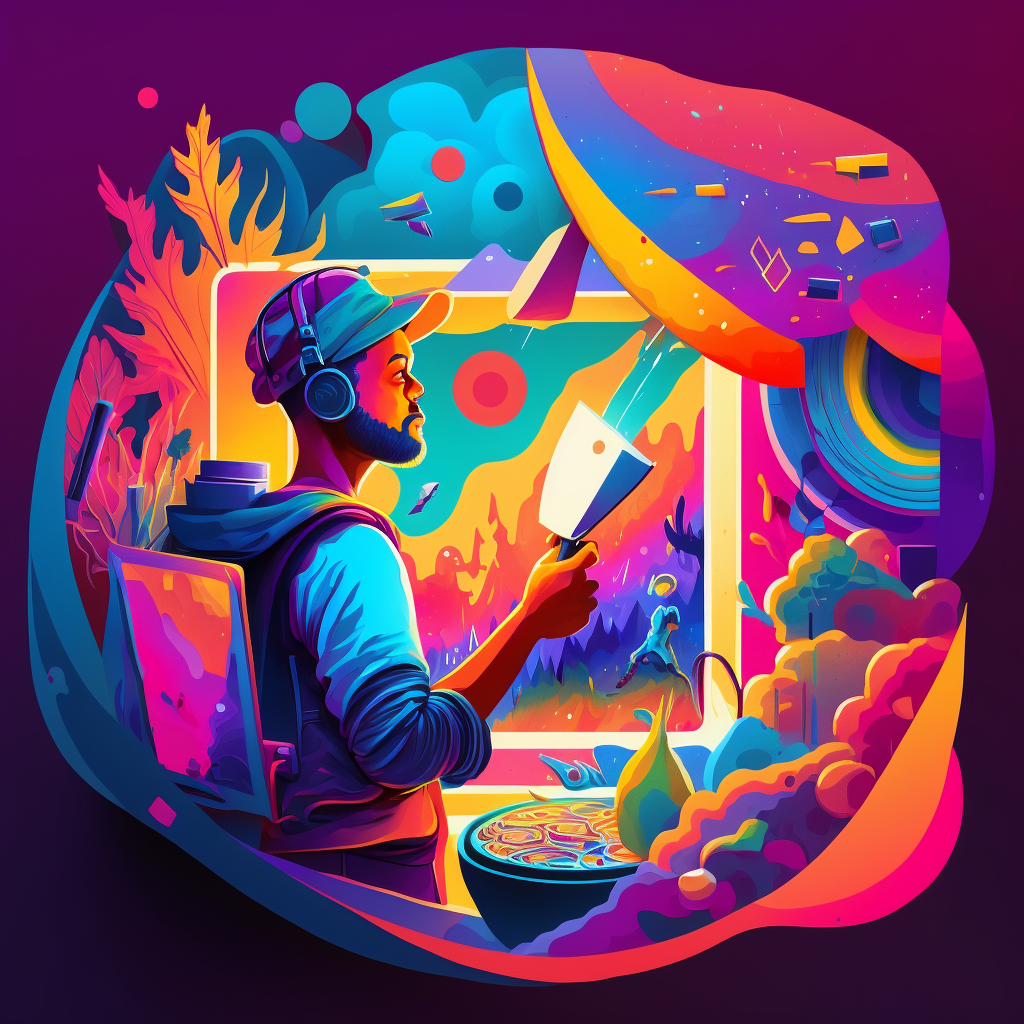
Non-fungible tokens (NFTs) have taken the art world by storm, offering a new way for artists to create, sell, and monetize their work. By providing a digital certificate of authenticity, NFTs allow artists to prove ownership and originality of their creations in the digital world. This technology is not only transforming how art is bought and sold, but also how artists and collectors engage with the market. In this article, we explore how NFTs are revolutionizing the art industry and the opportunities and challenges that come with it.
The Rise of NFTs in Art
NFTs are unique digital assets that are stored on a blockchain, typically on networks like Ethereum. Unlike cryptocurrencies such as Bitcoin, which are fungible (meaning each unit is identical to another), NFTs are one-of-a-kind and represent ownership of a specific digital asset. This uniqueness makes them ideal for representing digital art, music, videos, and other forms of creative expression.
The NFT boom began in earnest in 2021 when artists, particularly digital artists, began creating and selling their work as NFTs. This market gained mainstream attention when digital artist Beeple sold an NFT for $69 million at a Christie’s auction, sparking global interest in the potential of blockchain technology to transform the art world. Since then, thousands of artists have followed suit, creating a vibrant NFT art market that continues to grow.
How NFTs Benefit Artists
One of the primary benefits of NFTs for artists is the ability to retain control over their work in a digital medium. In traditional art markets, artists typically sell physical pieces of artwork and lose control over how they are used or resold. However, in the digital world, artworks are often easily copied and shared without the creator’s consent, making it difficult for digital artists to monetize their work.
NFTs solve this problem by allowing artists to create verifiable, limited editions of their work. Each NFT is tied to a specific digital file, such as a piece of art, and is stored on the blockchain, ensuring that the work cannot be altered or duplicated without the artist’s permission. By minting their work as NFTs, artists can establish scarcity and retain ownership rights, even in the digital realm.
Additionally, NFTs enable artists to earn royalties from secondary sales. In traditional art markets, artists typically earn money only when they first sell their work. If the artwork is later resold, the artist receives no further compensation. With NFTs, however, artists can embed smart contracts that automatically pay them a percentage of any future resale. This ensures that artists continue to benefit financially as the value of their work increases over time.
New Opportunities for Collectors
For collectors, NFTs offer a new way to invest in art and support their favorite artists. Unlike physical art, which can be difficult and expensive to store and transport, NFTs are entirely digital and can be easily traded or displayed online. Collectors can buy, sell, and display their NFT collections on platforms like OpenSea, Rarible, and Foundation, creating a more accessible and global art market.
NFTs also provide collectors with verifiable proof of ownership, reducing the risk of art fraud. In the traditional art market, proving the authenticity of a piece can be a complex and time-consuming process, especially for older or rare works. NFTs, on the other hand, use blockchain technology to create an immutable record of ownership, ensuring that each piece is authentic and original.
The accessibility of NFTs has also opened the door for a new generation of collectors. Historically, art collecting was reserved for the wealthy, as purchasing physical artworks often required significant investment. With NFTs, collectors can purchase digital art at various price points, from affordable pieces by emerging artists to high-end works by well-known creators.
Challenges in the NFT Art Market
Despite their many benefits, NFTs are not without challenges. One of the main criticisms of the NFT market is its environmental impact. Most NFTs are created on the Ethereum blockchain, which uses a Proof of Work (PoW) consensus mechanism that requires large amounts of energy to validate transactions. This has raised concerns about the carbon footprint of NFT transactions, particularly as the market continues to grow.
However, efforts are being made to address this issue. Ethereum is in the process of transitioning to a Proof of Stake (PoS) system, which is expected to significantly reduce energy consumption. Additionally, several other blockchains, such as Tezos and Flow, offer more energy-efficient alternatives for creating NFTs.
Another challenge is the volatility of the NFT market. The value of NFTs can fluctuate dramatically, making it difficult for artists and collectors to predict the long-term value of their investments. While some NFTs have sold for millions of dollars, others have lost value quickly after their initial sale. As the market matures, it is likely that prices will stabilize, but for now, both artists and collectors should be aware of the risks involved in participating in the NFT space.
The Future of NFTs in Art
As the NFT market continues to evolve, it is clear that this technology has the potential to reshape the art industry in profound ways. For artists, NFTs offer new opportunities to monetize their work, reach a global audience, and retain control over their creations. For collectors, NFTs provide a way to invest in digital art with verifiable proof of ownership and authenticity.
Looking ahead, it is likely that NFTs will continue to grow in popularity as more artists and collectors embrace the technology. We may also see new use cases for NFTs in other creative industries, such as music, film, and gaming, as well as the development of more environmentally friendly blockchain networks.
In addition, traditional art institutions, such as museums and galleries, are beginning to explore how they can incorporate NFTs into their exhibitions and collections. Some have already started hosting NFT auctions or displaying digital artworks alongside physical pieces, signaling that the art world is gradually embracing this new form of creative expression.
Conclusion
NFTs are revolutionizing the art industry by offering artists a new way to create, sell, and monetize their work in the digital age. Through blockchain technology, NFTs provide verifiable proof of ownership and allow artists to retain control over their creations, even after they are sold. While the market is still evolving and faces challenges such as environmental concerns and price volatility, the potential of NFTs to transform the art world is undeniable. As more artists and collectors embrace this technology, NFTs are likely to become an integral part of the art industry’s future.






